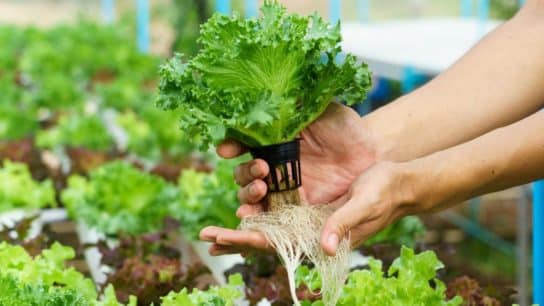The spread of drug-resistant bacteria, particularly gram-negative strains, demands urgent action, including research to evaluate the effectiveness of nature-based solutions in tackling the issue.
—
In many European countries, antimicrobial resistance genes are present in wastewater treatment plants, particularly in water coming from hospitals. In most cases, these plants are not designed to eliminate these genes, allowing them to pollute rivers and eventually reach homes. Antibiotics and resistance genes used to fertilize fields also make their way into aquatic ecosystems via livestock manure.
A global survey published in Nature in 2024 revealed that drug-resistant infections killed more individuals than Human Immunodeficiency Virus (HIV) or malaria. It is estimated that by 2050, antimicrobial resistance (AMR) – which occurs when bacteria and fungi evolve to withstand the drugs meant to eliminate them, allowing infections to persist and become difficult or even impossible to treat – could cause up to 10 million deaths. This is comparable to the number of deaths caused by cancer in 2020.
What Are Nature-Based Solutions?
Nature-based solutions are strategies that involve working with nature to address societal challenges, providing benefits for both human well-being and biodiversity. Examples include reforestation to absorb carbon and prevent erosion, wetland restoration for water filtration and flood control, green roofs to cool cities and reduce pollution, mangrove protection to protect coasts, and agroforestry to enhance soil health and crop yields. These solutions improve biodiversity, water quality, and disaster risk while also boosting human well-being through cleaner air and greener spaces.
Wastewater from urban treatment plants contains biofilm – mainly bacteria and microalgae – as well as planktonic communities that absorb antibiotic-resistance genes and mobile genetic elements. Biofilm naturally forms on stones in the water and helps purify it by breaking down these contaminants.
Inspired by this natural process, researchers from BETA Technological Centre in Catalonia, Spain, have developed a lab-based pilot-scale system as a nature-based solution. In the plant, wastewater is recirculated in a bioreactor, allowing biofilm and planktonic communities to grow. Within a few days, the water is purified. This low-cost approach is particularly suitable for small-town treatment plants. The bioreactor would be placed at the plant’s outlet, where nutrient levels support biofilm growth, serving as a tertiary water treatment step.
The European Union-funded SURE-AMR project is also looking at ways to tackle AMR with nature-based solutions in regions like Ukraine. The Eastern European country is facing a growing AMR problem exacerbated by war. Now, The European Union is confronting a growing challenge with Antimicrobial Resistance (AMR), which is being further exacerbated by the war in neighboring Ukraine.
The project started in October 2024 with Ukraine as leader and other partner institutions in Germany, Italy, Poland and Spain. Among the solutions assessed in the initiative are duckweed bioreactors in the outlet of a water treatment plant. Duckweed is an aquatic plant capable of removing nutrients like nitrogen and phosphorus, bacteria, and antibiotic residues from water.
The second solution assessed, as a second stage of water purification, mimics a river ecosystem with biofilm channels and snails. Biofilms feed on contaminants like AMR genes, reducing their presence in water. Snails contribute by feeding on excess biofilm, preventing overgrowth, and consuming organic debris and algae, further refining the purification process. The process finishes with constructed wetlands for final purification.
This approach reduces operational costs, making water treatment more accessible in resource-limited areas. It also enhances climate resilience and strengthens ecosystems by developing natural infrastructures (duckweed bioreactors and biofilm channels) that protect water sources, while addressing AMR to protect public health and prevent transmission.
The Rise of AMR
While AMR is a natural phenomenon, it is significantly accelerated by the overuse and misuse of antibiotics and antifungals. These medications not only target harmful pathogens but also disrupt beneficial microbes, creating pressure for bacteria and fungi to adapt.
Resistant germs can transfer their DNA, including resistance traits, to other microbes, even those not previously exposed to antibiotics or antifungals. This process enables antimicrobial-resistant pathogens to survive, spread, and develop stronger defense mechanisms. Simply killing bacteria does not eliminate resistance genes, as they can persist in microbial communities and continue to propagate.
The rise of AMR is largely driven by the rapid evolution of highly resistant gram-negative bacteria, which have outpaced gram-positive strains. The outer membrane of gram-negative bacteria is the main reason for resistance to a wide range of antibiotics. Mutations in the proteins of these membranes confer bacteria resistance to even new drugs. An example of gram-negative bacteria is Klebsiella, a common intestinal bacterium with elevated resistance levels against critical antibiotics. This bacterium can break down beta-lactam drugs, such as penicillin. These antibiotics inhibit bacterial cell wall synthesis causing bacterial cell death.
This resistance is being observed in higher proportions in countries at war, such as Ukraine, and is becoming an increasing challenge in Europe, Asia and the Americas. Projections by the Organization for Economic Cooperation and Development (OECD) indicate a twofold surge in resistance to last-resort antibiotics by 2035, underscoring the urgent need for robust antimicrobial stewardship practices and enhanced surveillance coverage worldwide.
Holistic Approach
Fighting the rapidly growing global issue of antimicrobial resistance requires integrating environmental solutions, human and veterinary medicine, and policy-driven interventions. In healthcare, it is crucial to invest in new treatments while also ensuring responsible antibiotic use, infection prevention, and antimicrobial stewardship to reduce misuse and slow the development of resistance. In veterinary medicine, restricting antibiotics in animals raised for food, where these drugs are used to promote faster growth rather than treat illness, is key. Improving farm hygiene, animal welfare, and vaccination coverage can also help limit AMR spread.
This story is funded by readers like you
Our non-profit newsroom provides climate coverage free of charge and advertising. Your one-off or monthly donations play a crucial role in supporting our operations, expanding our reach, and maintaining our editorial independence.
About EO | Mission Statement | Impact & Reach | Write for us














